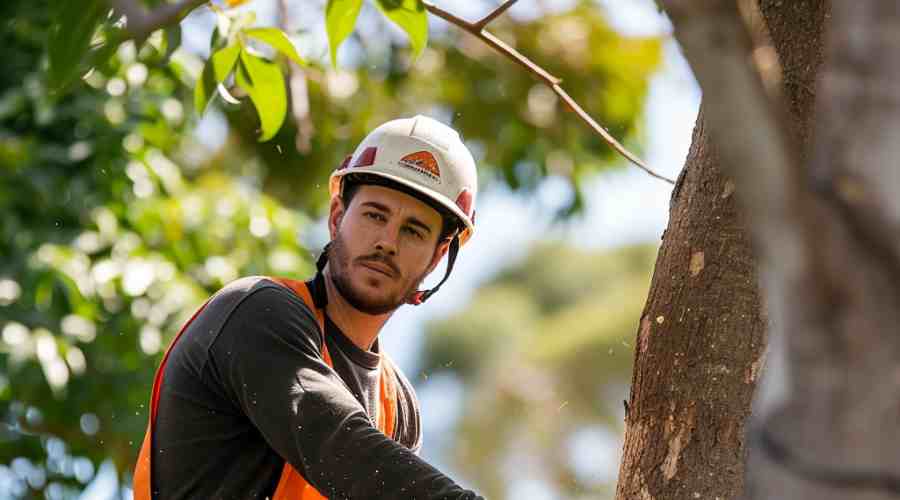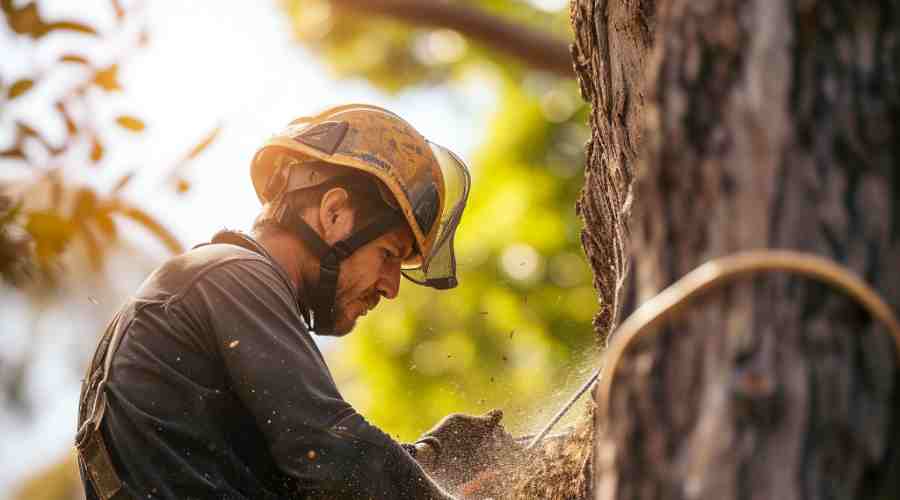Tree Pruning Vs. Tree Lopping
Which Is Better For Your Trees?
Have you ever looked at the trees in your yard and thought they could use some care and upkeep but weren’t sure where to start? When it comes to tree maintenance, two of the most common practices are pruning and lopping. But what exactly do those terms mean and which is better for your trees?
What Is Tree Pruning?
It refers to selectively removing branches from a tree to encourage healthy growth. It involves strategically cutting back tree branches using proper technique and tools.
Here are some of the main reasons you may want to prune your trees:
Promoting overall health by removing dead or damaged branches diverts energy to healthy areas. Improving structure helps shape the tree and prevent potential hazards. Increasing light and airflow by thinning the canopy allows light and air to penetrate. Enhancing aesthetics through careful pruning can enhance the natural form of trees. Maintaining size controls growth so trees don’t get too large.
Pros of Pruning:
- Encourages vigor by focusing growth to specific areas
- Protect trees against disease by removing infected areas
- Avoids potential hazards like falling branches
- Maintains attractive landscape without drastically altering shape
Cons of Pruning:
- Can unintentionally encourage extensive new growth
- Needs to be done regularly or trees can become overgrown
- Removing too many branches can stress the tree
Overall, research shows that regular, careful pruning performed by a professional arborist provides huge benefits for the health of your trees.
What Is Tree Lopping?
In contrast to pruning, tree lopping refers to drastically cutting back branches to stubs or to the trunk. This severe cutting removes large sections of the tree canopy carelessly and without strategy.
Here’s why some property owners resort to lopping trees:
Quickly reducing tree height or width, allowing more sunlight to penetrate to the ground, reducing leaf litter and debris, and eliminating obstructed views.
Pros of Lopping:
- Immediately decreases the tree height and canopy density
- Opens up the yard area considerably
- Provides short-term clearance for views or sunlight
Cons of Lopping:
- Removes too much foliage, sending the tree into shock
- Damages the tree’s structural integrity
- Encourages extensive, weakly attached new growth
- Spoils the tree’s natural form completely
- Can introduce disease and allow decay
- Ultimately shortens the tree’s lifespan
As you can see, lopping does accomplish some goals in the short term. But it sets up bigger problems down the road and can sadly shorten a tree’s life.
Key Differences Between Tree Lopping and Pruning
Now that we’ve covered the basics, let’s recap the major differences:
| Pruning | Lopping |
|---|---|
| Strategic | Haphazard |
| Conservative | Aggressive |
| Precision cuts | Careless stubs |
| Respects structure | Damages structure |
| Encourages health | Causes stress |
| Enhances form | Deforms tree |
| Long-term benefits | Short-term gains |
As you can see, pruning takes a careful, restorative approach that considers the tree’s needs. Lopping focuses only on immediate goals, causing extensive harm.
Which Should You Choose For Your Trees?
When it comes to pruning vs. lopping, we hope we’ve helped illustrate the drastic differences. Pruning is unequivocally the better choice for tree health and longevity. It also provides plenty of ongoing benefits that ultimately outweigh short-term lopping gains.
We recommend consulting an experienced tree loppers to assess your trees’ needs and establish a regular pruning plan. Attempting to prune large trees yourself can be dangerous. Leave it to the professionals with the skills, safety equipment and experience to do it safely.
If you have landscape goals like increasing sunlight, enhancing views or reducing leaf litter, communicate that to your qualified arborist. There are always more sustainable, tree-friendly solutions than aggressive lopping. A qualified professionals can tailor a plan to accomplish your goals while preserving your trees.
In Conclusion
Caring for trees is extremely fulfilling when done properly. Regular pruning encourages strength, beauty and longevity in your trees while preventing hazards. In contrast, lopping causes irreparable harm that can sadly cut a tree’s life short. Always take a conservative, restorative approach that considers your trees needs first and foremost. With some expert guidance, you’ll enjoy the many benefits beautiful, thriving trees offer for years to come!
Pro Tip: When considering tree removal, be sure to check your local laws around trees. Many municipalities have regulations about removing mature trees or require permits. Additionally, if your tree produces edible fruits, you want to use safe pruning and care methods that don’t impact fruit production. Consulting an experienced arborist from a reputable tree service can ensure you stay compliant with laws and maintain a healthy tree.


